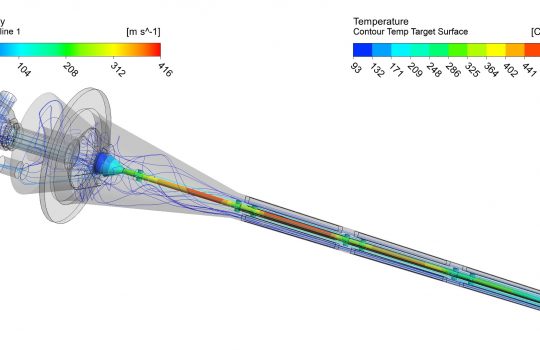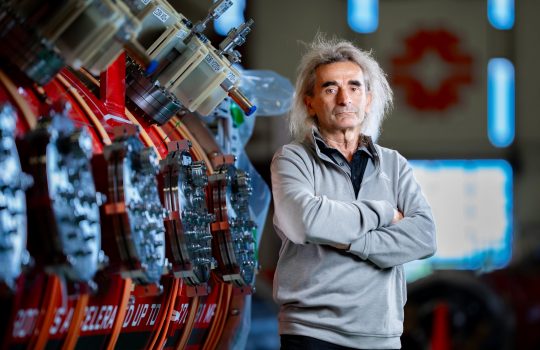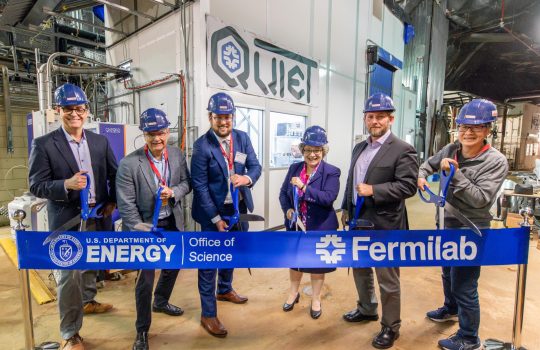Cost- and energy-efficient rapid cycling magnets for particle accelerators are critical for particle physics research. Their performance determines how frequently a circular particle accelerator can receive a bunch of particles, propel them to higher energy, send them to an experiment or target station, and then repeat all over again.
A small team of physicists, engineers and technicians at the U.S. Department of Energy’s Fermi National Particle Accelerator Laboratory, led by Henryk Piekarz, just demonstrated the world’s fastest magnetic ramping rates for particle accelerator magnets. Noteworthy, they achieved this record by using magnets made with energy-efficient, high-temperature superconducting material.
What is the best conductor?
Despite the many attractive features of superconducting wire, the fastest-ramping high-energy particle accelerators still use magnets with copper conductors operating at room temperature. Examples include the 3 GeV proton ring at JPARC in Japan, which features a magnetic field that changes at a rate of 70 tesla per second (T/s) and reaches a peak magnetic field of 1.1 tesla, and the 8 GeV Booster ring at Fermilab, which achieves a ramping rate of 30 T/s and a peak field of 0.7 tesla.
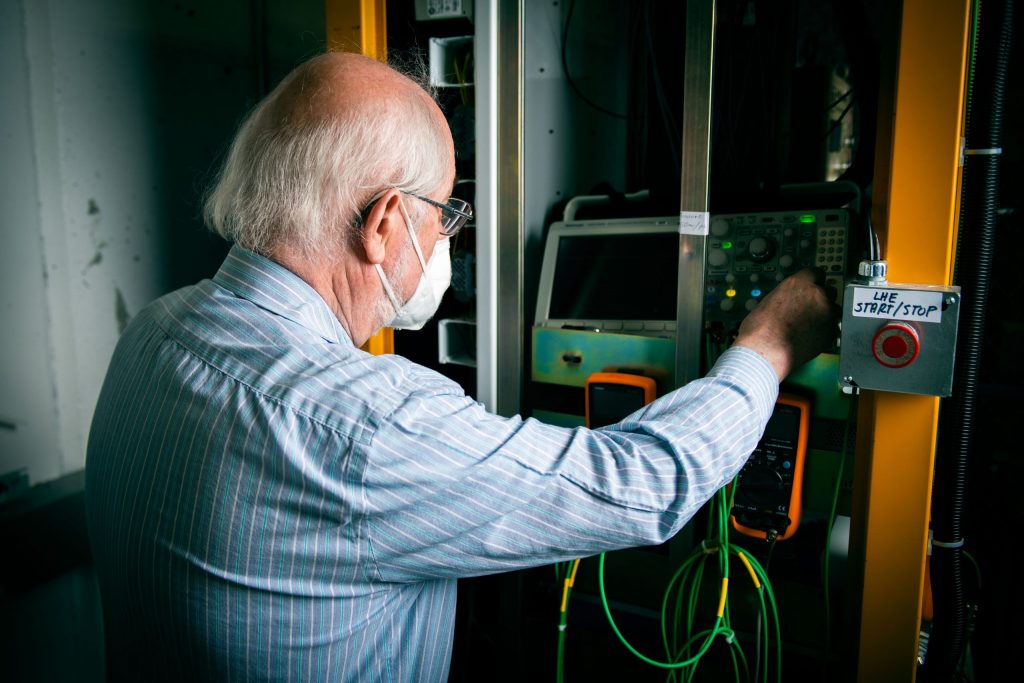
Henryk Piekarz of Fermilab’s Accelerator Division controls the flow of cryogens in the high-temperature superconductor magnet prototype. Photo: Ryan Postel, Fermilab
Most of the powerful superconducting magnets employed in modern-day particle accelerators are relatively slow when it comes to increasing the magnetic field. Their main goal is to ramp up to a high peak magnetic field to steer particles around a ring while electric fields propel the particles to higher and higher energy. The higher the energy, the stronger the magnetic field must be to keep the particles in their track as they go around the ring.
Fermilab’s Tevatron accelerator was the first machine based on superconducting steering magnets. The ramping of the 4.4 tesla magnets to full magnetic strength took more than a minute and a half, while electric fields increased the energy of the particles to 1 TeV. Today, the world’s most powerful accelerator, the Large Hadron Collider at CERN, uses superconducting steering magnets that ramp up to almost 8 tesla in approximately 20 minutes, while the accelerator propels particles to 6.5 TeV. This corresponds to a ramping rate of about 0.006 T/s and is much slower than the ramping rate of conventional accelerator magnets operating at room temperature.
A team at Fermilab has demonstrated the world’s fastest magnetic ramping rates for particle accelerator magnets. Noteworthy, they achieved the record by using energy-efficient, high-temperature superconducting tape.
Now, a superconducting accelerator test magnet is taking the ramping rate lead as Fermilab’s high-temperature superconductor test magnet has yielded rates of up to 290 T/s, while achieving a peak magnetic field strength of about 0.5 tesla. The results have been published on the arXiv and reported at the 27th International Conference on Magnet Technology by the IEEE Council on Superconductivity this month. Piekarz and his colleagues hope to achieve even higher magnetic field strength by increasing the electrical current running through the magnet, while maintaining the superior ramping rate.
The solution: high-temperature superconductor
Two major problems are limiting the magnetic ramping rate in “low-temperature” superconducting accelerator magnets now in common use. The first one is the heating of the superconductor during ramping, due to eddy currents that can create large heat depositions in the superconductor. This heating rapidly increases with the increase of field amplitude and the ramping rate. The second one is the very small margin for temperature variation in the traditional low-temperature superconductors, such as niobium-titanium and niobium-tin, which are used in most modern superconducting accelerator magnets. Even a small increase in temperature can lead to the undesirable transition of a superconducting magnet into its normal conducting, resistive state.
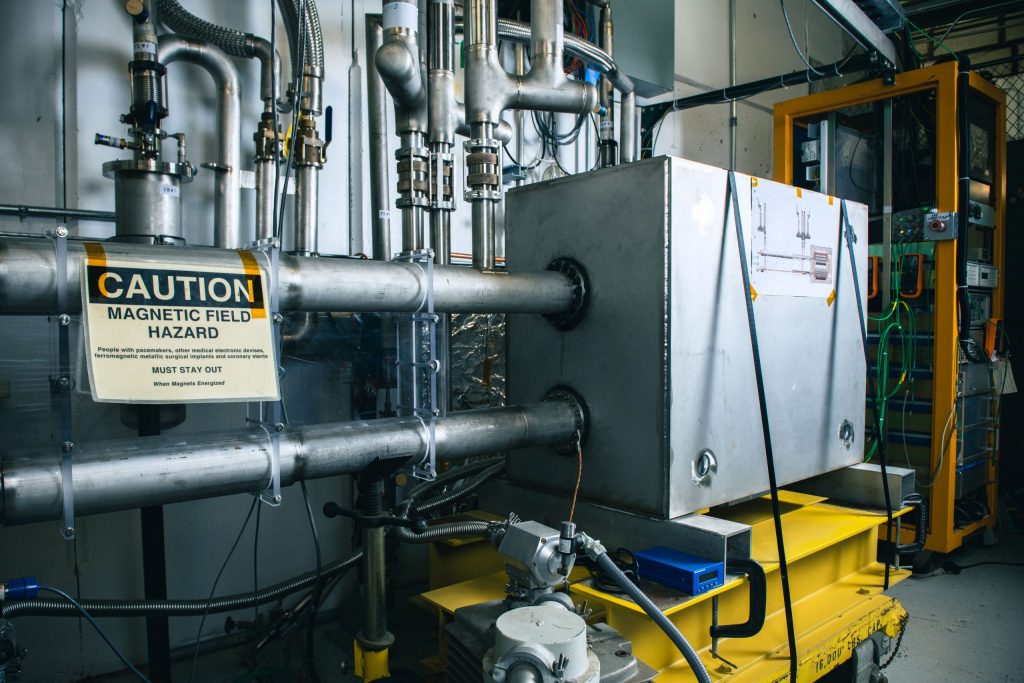
A dual-aperture, high-temperature superconductor accelerator magnet test set-up. Photo: Ryan Postel, Fermilab
The solution to these problems is to employ the unique properties of “high-temperature” superconducting material known as YBCO. Using this material, Piekarz and his team designed a magnet and operated it at temperatures between 6 and 20 K and up to 1,000 amps of electrical current.
The peak strength of the magnetic field achieved during the record-setting ramping tests was limited by the electrical current provided by the power supply used in the test. Piekarz and his team plan to expand the power supply capabilities in the future, possibly achieving even higher rates, as they will carry out further studies on the ultimate capabilities of this advanced magnet technology.
The development of these fast-cycling magnets is critical for future neutrino research, featuring rapid-cycling proton synchrotrons, particle injectors for the proposed Future Circular Collider, and the design of pulsed muon colliders.
Their research was supported through the Laboratory Directed Research and Development program, an initiative established to foster innovative scientific and engineering research at Department of Energy national laboratories.
Fermi National Accelerator Laboratory is supported by the Office of Science of the U.S. Department of Energy. The Office of Science is the single largest supporter of basic research in the physical sciences in the United States and is working to address some of the most pressing challenges of our time. For more information, please visit science.energy.gov.

